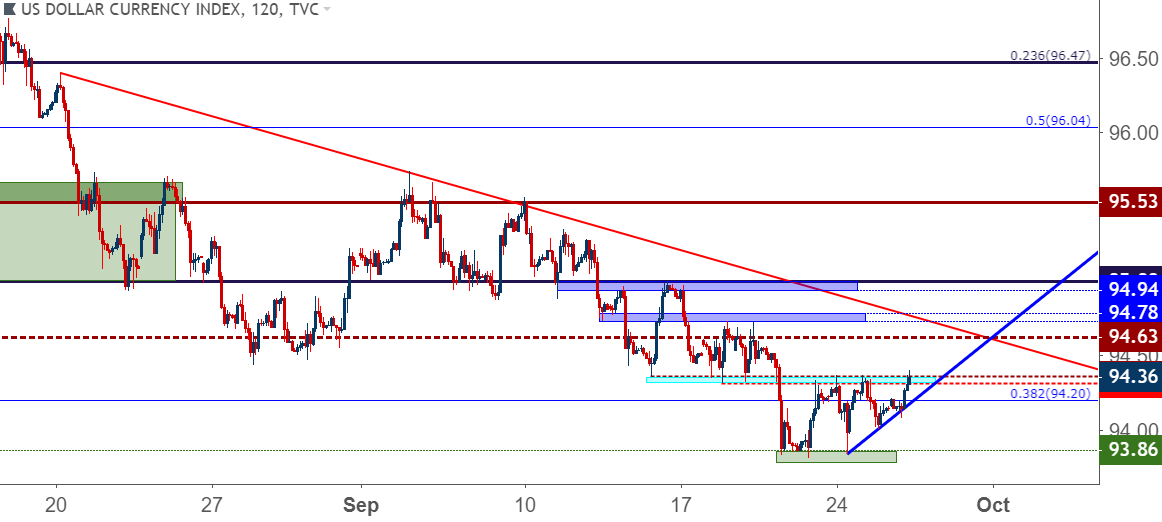US DOLLAR BOUNCES AHEAD OF THE FED
Today at 2 PM ET brings the Federal Reserve’s September rate decision, and the wide expectation is that we’ll be seeing a 25 basis point hike to mark the third such move out of the FOMC in 2018. But a hike today has long been expected, and the Fed has been fairly clear about this fact, so as we move into today’s rate decision, today’s hike is likely baked into current prices.
The bigger question is the Fed’s take on forward-looking economic conditions, and whether the bank begins to lay the groundwork for a December hike and continued hawkishness as we move into 2019. Odds for another hike in December have continued to hold rather strong, with current probabilities showing at 83.7%. Going out to next year, however, brings far more variability: There’s a 19.1% chance that we see four more 25 basis point hikes (which would be five total, including today) going out to October of next year, and a 50.8% chance of seeing three hikes after today’s ahead of October 2019.
This is where we might see movement around the US Dollar: If the Fed ramps up hawkishness towards 2019, we could see USD break its recent trend of weakness, if only temporarily. Given this week’s performance in the Dollar, it could be reasonable expect a small bump-higher before bears might really be able to pounce. There’s still a tinge of bearish price action as the resistance area around 94.33 continues to hold the near-term highs, but each resistance response this week has carried a smaller reaction, indicating that bears might be soon taking a step back.
US DOLLAR TWO-HOUR PRICE CHART: RESISTANCE REMAINS, BUT CARRYING LESS EFFECT

Chart prepared by James Stanley
We discussed this theme in-depth in yesterday’s webinar, and given the backdrop from what Q3 has brought to USD price action, it would not be surprising to see the currency move back for a test of the Q3/July open at 94.63. If we close near that level, it would give us the net of a Doji over the past three months despite considerable volatility throughout the period. This would also keep the case for bearish strategies in the Dollar for Q4 as rather attractive, as the bullish burst from April and May just went through four months of grind with the net result being a weaker US Dollar. This is evidence that USD bulls could not extend the move despite a litany of reasons and motivations to do so, and this highlights the potential for a return of the bearish drive that became so commonplace and built-in during the 2017 down-trend in USD.








Leave A Comment